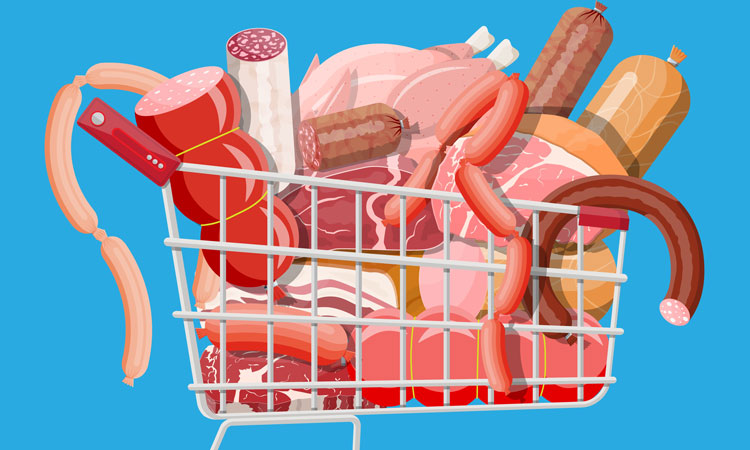Research confirms comparable protein quality for ribeye and processed meat
- Like
- Digg
- Del
- Tumblr
- VKontakte
- Buffer
- Love This
- Odnoklassniki
- Meneame
- Blogger
- Amazon
- Yahoo Mail
- Gmail
- AOL
- Newsvine
- HackerNews
- Evernote
- MySpace
- Mail.ru
- Viadeo
- Line
- Comments
- Yummly
- SMS
- Viber
- Telegram
- Subscribe
- Skype
- Facebook Messenger
- Kakao
- LiveJournal
- Yammer
- Edgar
- Fintel
- Mix
- Instapaper
- Copy Link
Posted: 22 September 2020 | Mandy Parrett (New Food) | No comments yet
A recent study from the University of Illinois assessed the protein quality of various meats, finding that both expensive cuts of meat contain equally highly digestible amino acids as cheaper processed meat products.


When looking to ensure the health of various populations, it’s important to investigate, not only how much protein various foods contain, but also its quality. Given this, nearly ten years ago, the the Food and Agriculture Organization of the United Nations (FAO)developed a new index to assess protein quality in foods.
The index, known as the digestible indispensable amino acid score (DIAAS), analyses the specific digestibility of individual amino acids that make up proteins. Importantly, it uses pigs, as opposed to rats, as the preferred model for humans.
Based on this index, Hans Stein, professor in the Department of Animal Sciences and the Division of Nutritional Sciences at Illinois University, worked with his team to assess the nutritional value of various meats for human consumption.
In a newly published study in the British Journal of Nutrition, Stein and his co-authors show meat products, including ribeye steak, bologna (a highly processed meat product), beef jerky, and others, score above 100 on the DIAAS chart, meaning their amino acids are highly digestible and complement lower-quality proteins.
“If the protein quality is greater than 100, that means it can compensate for low protein quality in another food. In developing countries where people are eating a lot of maize or rice, they are typically undernourished in terms of amino acids. But if they can combine that with a higher-quality protein such as a small amount of meat, then you have improved quality overall,” Stein says.
Other meats, as well as dairy products, have already been shown to have high DIAAS scores, but this is the first study to evaluate cooked and processed meat products. Since cooking and processing can affect proteins, Stein knew it was important to feed the pigs the same form of meats that humans consume.
“We did feed ribeye steaks to the pigs,” Stein says. “They loved it.”
Nine pigs were fed each of the following nine meat products for a week: salami, bologna, beef jerky, raw ground beef, cooked ground beef, and ribeye roast cooked medium-rare, medium, and well-done. Researchers collected material from the small intestine and amino acid-digestibility and DIAAS scores were calculated for various human age groups using this material.
For all the meat products and age groups, DIAAS values were generally greater than 100 regardless of processing, although scores tended to be higher when calculated for older children, adolescents and adults, than children between six months and three years of age.
“The reason for that is the amino acid requirement, and the requirement for higher quality protein, is greater for younger children because they’re actively growing. Adults don’t necessarily need a very high protein quality because their protein needs are not very high, unless they are bodybuilders or nursing women,” Stein says.
The results also showed bologna and medium-cooked ribeye steak offered the highest DIAAS values in the study for the older children, adolescents, and adults age group. This may be surprising to many – that bologna, a highly processed, low-cost meat product, offers high-quality, digestible protein – but will likely be welcome news for lower-income families.
Stein points out that meat proteins aren’t the only low-cost option. His earlier research shows milk and other dairy products are excellent sources of protein for children. And he plans to evaluate fish, eggs, plant-based meats, and more products in the future.
Related topics
Health & Nutrition, Proteins & alternative proteins, Quality analysis & quality control (QA/QC), Research & development
Related organisations
British Journal of Nutrition, Food and Agriculture Organization of the United Nations (FAO), University of Illinois









